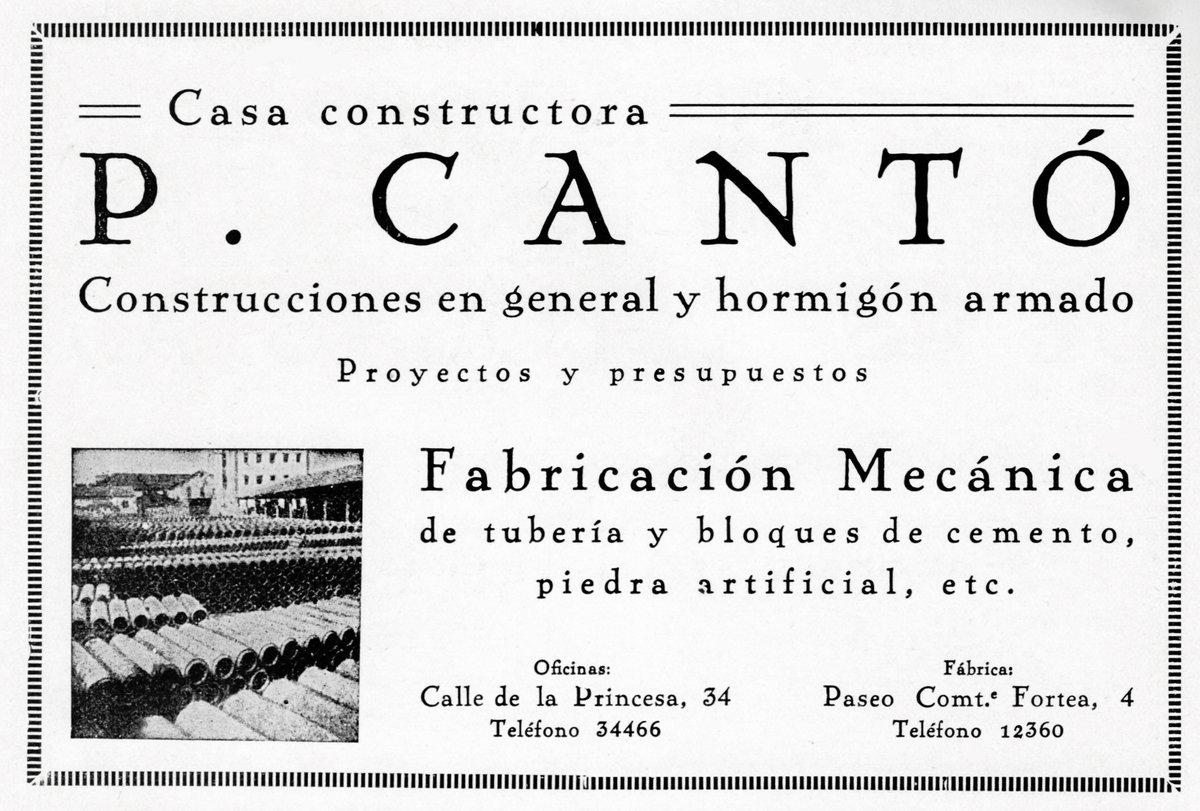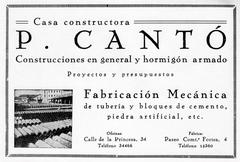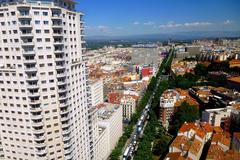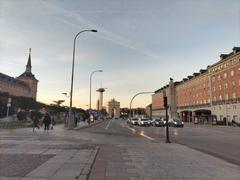
Princesa Madrid Visiting Hours, Tickets, and Travel Guide
Date: 15/06/2025
Introduction
Princesa, located in the western heart of Madrid, is an exceptional district that seamlessly blends historical depth, cultural richness, and modern vitality. Evolving from a strategic corridor during Madrid’s 19th-century expansion, Princesa today is a dynamic neighborhood featuring iconic landmarks, vibrant student quarters, and a thriving arts scene. Visitors are captivated by sites such as Plaza de España, the monumental Arco de la Victoria, and the panoramic Faro de Moncloa, all easily accessed via Madrid’s efficient public transport. This comprehensive guide provides detailed insights into Princesa’s history, main attractions, visiting hours, ticketing, accessibility, and practical travel tips to ensure a rewarding experience.
For the latest updates and guided tours, consult official tourism resources and consider using recommended travel apps for real-time information (esmadrid.com, madridistaforever.com, mypathintheworld.com).
Table of Contents
- Early Development and Urban Evolution
- Key Landmarks and Architectural Highlights
- Political and Cultural Significance
- Urban Planning and Modernization
- Historical Events and Their Legacy
- Visitor Experience: What to See & Do
- Practical Information: Hours, Tickets, Accessibility
- Social Dynamics and Local Life
- Preservation and Urban Challenges
- Insider Tips for Exploring Princesa
- Frequently Asked Questions (FAQ)
- Conclusion & Call to Action
- Sources
1. Early Development and Urban Evolution
Princesa originated during Madrid’s late 19th-century expansion, serving as a vital link between the historic city center and the new western suburbs. Calle de la Princesa, the district’s main boulevard, was developed as part of the city’s modern infrastructure drive, marking Madrid’s transition from medieval to contemporary urban planning. The avenue’s strategic location between Plaza de España and Moncloa established it as a crucial corridor for civic, military, and commercial activity (esmadrid.com).
The district benefitted from the introduction of tram lines and, later, the metro, which further stimulated residential and commercial growth. Over time, Princesa became emblematic of Madrid’s ability to balance historical continuity with innovative development (madridistaforever.com).
2. Key Landmarks and Architectural Highlights
Princesa’s architectural landscape reflects Madrid’s evolving styles from the 19th century to the present:
- Plaza de España: A central square featuring the Monument to Cervantes, flanked by two of Madrid’s tallest historic buildings—Edificio España and Torre de Madrid (madridtraveling.com).
- Calle de la Princesa: The main thoroughfare, lined with neoclassical and eclectic buildings, renowned for its boutiques, cafés, and theaters (Wikipedia).
- Arco de la Victoria: A monumental arch marking the entrance to Moncloa, built in the 1950s to commemorate the Spanish Civil War’s Battle of Ciudad Universitaria (mypathintheworld.com).
- Faro de Moncloa: A 110-meter observation tower offering sweeping views over Madrid, open Tuesday to Sunday, with ticketed entry.
- Templo de Debod: An ancient Egyptian temple gifted to Spain, located in nearby Parque del Oeste, open daily with free entry (Must See Spain).
- Museo Cerralbo: A 19th-century mansion museum near Calle de la Princesa, open Tuesday to Sunday, with free entry on Sundays (Freetour.com).
3. Political and Cultural Significance
Princesa’s proximity to institutions such as the Spanish Air Force headquarters and the Complutense University has cemented its importance in Madrid’s political and educational landscape. The district played a central role during the Spanish Civil War, especially in the Battle of Ciudad Universitaria, leaving a lasting imprint on local identity (mypathintheworld.com).
Culturally, venues like the Conde Duque Cultural Center—housed in a historic barracks—host exhibitions, concerts, and performances, contributing to Madrid’s vibrant arts ecosystem (bestmadridhotels.com).
4. Urban Planning and Modernization
The early 20th-century Gran Vía development plan integrated Princesa into Madrid’s urban fabric, improving connectivity and spurring the construction of landmark buildings and public spaces. The district continued to modernize throughout the 20th century, with high-rise buildings, expanded transport links, and pedestrian-friendly zones that enhance both livability and visitor appeal (esmadrid.com).
5. Historical Events and Their Legacy
Princesa’s streets witnessed fierce fighting during the Spanish Civil War, particularly around Moncloa and Ciudad Universitaria. The physical scars and commemorative monuments throughout the area serve as reminders of these pivotal events. Postwar reconstruction and the hosting of international events like the 1982 FIFA World Cup and the 1992 European Capital of Culture further shaped the district’s evolution (madridistaforever.com).
6. Visitor Experience: What to See & Do
Princesa offers a rich mix of history, culture, and local life:
- Sightseeing: Explore Plaza de España, Arco de la Victoria, Templo de Debod, and the panoramic Faro de Moncloa.
- Shopping: Browse international brands, independent boutiques, and the El Corte Inglés department store along Calle de la Princesa (Madrid Capital de Moda).
- Theaters: Attend plays, concerts, and dance performances in local venues, with many offering student discounts (Discover Walks).
- Cafés and Gastronomy: Experience the district’s culinary diversity, from traditional Spanish taverns to trendy cafés. Try the menú del día for excellent value at lunch.
- Green Spaces: Relax in Parque del Oeste or the Jardines de Sabatini.
7. Practical Information: Hours, Tickets, Accessibility
- Visiting Hours: Outdoor public spaces are open 24/7. Museums and cultural sites generally operate from 9:30/10:00 AM to 6:00–9:00 PM, Tuesday to Sunday. Always check individual websites for current hours.
- Tickets: Many attractions, such as Templo de Debod and Plaza de España, are free. Museums and towers like Faro de Moncloa require tickets (€3–€5). Purchase tickets online where available to avoid queues.
- Guided Tours: Available through local operators, covering historical, architectural, and cultural highlights.
- Accessibility: Most public transport stations and major attractions are wheelchair accessible. Contact venues for specific requirements.
8. Social Dynamics and Local Life
Princesa’s demographic landscape is diverse, encompassing students, professionals, expatriates, and long-time residents. Its proximity to major universities fuels a lively atmosphere, evident in the area’s bookstores, affordable eateries, and vibrant nightlife. The district’s cosmopolitan flair is showcased in its festivals, public events, and thriving café culture (bestmadridhotels.com).
9. Preservation and Urban Challenges
Ongoing restoration efforts maintain Princesa’s architectural heritage while adapting buildings for contemporary use. Urban challenges include managing density, traffic, and sustainable development. Authorities are prioritizing pedestrianization, green spaces, and cultural tourism to retain Princesa’s unique character (esmadrid.com).
10. Insider Tips for Exploring Princesa
- Start at Plaza de España for easy access to major attractions.
- Visit early or late in the day to avoid crowds, especially at Templo de Debod and Faro de Moncloa.
- Use public transport: Metro stations like Moncloa and Plaza de España offer quick connections across Madrid.
- Explore side streets for hidden cafés, bookshops, and local boutiques.
- Take advantage of free museum hours (often Sundays).
- Check local event listings for theater, music, and festivals.
11. Frequently Asked Questions (FAQ)
Q: What are the main visiting hours for attractions in Princesa?
A: Outdoor sites are always open; museums and towers usually operate from 9:30/10:00 AM to 6:00–9:00 PM, Tuesday to Sunday.
Q: Are tickets required for all attractions?
A: Many major sites are free, but observation towers and some museums require tickets. Online booking is recommended for popular sites.
Q: Is Princesa accessible for people with disabilities?
A: Yes, most major attractions and transport hubs are accessible, though some historic buildings may have limitations.
Q: Are guided tours available?
A: Yes, guided walking and bike tours are offered by local operators.
Q: What’s the best time to visit Princesa?
A: Late spring and early autumn offer pleasant weather and smaller crowds.
12. Conclusion & Call to Action
Princesa is a vibrant reflection of Madrid’s evolving identity—where history, architecture, and cosmopolitan life converge. Whether you’re drawn to its monumental squares, cultural venues, or lively local scene, the district offers countless opportunities for discovery. Make the most of your visit by planning ahead, leveraging guided tours, and exploring beyond the main streets to uncover hidden gems.
Ready to experience Princesa Madrid?
Download the Audiala app for the latest guides, real-time updates, and exclusive travel tips. Follow us on social media for more inspiration and plan your next Madrid adventure today!
13. Sources and Further Reading
- Princesa Madrid: History, Visiting Hours, Tickets, and Top Attractions, 2025, esMadrid (esmadrid.com)
- History of Madrid, 2025, Madridista Forever (madridistaforever.com)
- Famous Landmarks in Madrid, Spain, 2025, My Path in the World (mypathintheworld.com)
- Melia Madrid Princesa Hotel Information, 2025, Best Madrid Hotels (bestmadridhotels.com)
- What to Do in Madrid Landmarks, 2025, Madrid Traveling (madridtraveling.com)
- Calle de la Princesa (Wikipedia)
- What to Visit in Madrid (Barceló Guide)
- Princesa Argüelles Shopping (Madrid Capital de Moda)
- Madrid’s Most Beautiful Streets (Discover Walks)
- Top 20 Must-See Places in Madrid (Freetour.com)
- Must See Spain: Madrid Travel 2025 (Must See Spain)
- Neighborhoods of Madrid: What Not to Miss (SHMadrid)
- Safety in Madrid (Madrid Traveller)
- Best Things to Do in Madrid (Madrid Traveller)
- Madrid Revealed Travel Guide (Spain Revealed)




































































































